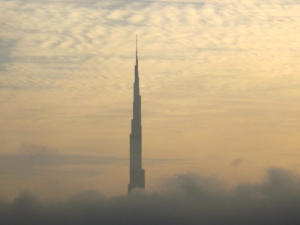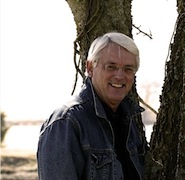 Dubai is a lot easier to see than it is to explain. Most know it is one of the seven states of the United Arab Emirates (UAE), but even that is hard to understand. I won’t test your patience by naming them all, but I’ll mention Abu Dhabi which most of you might have heard. Each state has its own ruler who together with his colleagues form the Ruling Council who in turn elects/appoints ministers to oversee foreign affairs and defense. All else is left to the head honcho in each state. These states are notable because they happen to sit on a sea of oil and gas (which they haven’t even bothered with yet), and have created wealth that even Bill Gates and Warren Buffett would have a hard time coming to grips with. The other notable fact is that while the UAE and its member states are on good terms with Uncle Sam and are considered to be an ally in an uncertain world, democracy is nowhere to be seen.
Dubai is a lot easier to see than it is to explain. Most know it is one of the seven states of the United Arab Emirates (UAE), but even that is hard to understand. I won’t test your patience by naming them all, but I’ll mention Abu Dhabi which most of you might have heard. Each state has its own ruler who together with his colleagues form the Ruling Council who in turn elects/appoints ministers to oversee foreign affairs and defense. All else is left to the head honcho in each state. These states are notable because they happen to sit on a sea of oil and gas (which they haven’t even bothered with yet), and have created wealth that even Bill Gates and Warren Buffett would have a hard time coming to grips with. The other notable fact is that while the UAE and its member states are on good terms with Uncle Sam and are considered to be an ally in an uncertain world, democracy is nowhere to be seen.
S. and I figured, what the hey, while we’re in the neighborhood, why not slip over and see what all the fuss is about. I know you may not be fussing about Dubai, but they’ve made a pretty big scene for the last ten years or so. Our first decision was to figure out which of the 300 some luxury hotels would get our trade. Yes, I said 300. And yes, I said luxury…as in very expesive luxury. We settled on Raffles because, well, I don’t know why we settled on Raffles, but I think we could have thrown a dart at the list of hotels and done ok. I’m glad we avoided the Burj al Arab as rooms there start at $5000 a night and go up quickly. We did ok though. A very commodious suite with a lighting system so complex we never did figure it out; causing me to have to shave in the dark two mornings. Our suite fronted on a view of Bur Dubai, which is on the left and old side of the creek spilling in from the sea. The skyline was punctuated by the spire you see above which tops Burj Kalifa, the tallest building in the world….which we were told exactly 174 times. It is, to be precise, 2760 feet tall and is comprised of 200 floors. If you probed, you would find that only the first 166 floors are intended for occupancy. I guess the other 34 or for storage. One must ask, as I did to no avail, why one would build a building of 200 floors and only intend 166 for use, particularly when there is land as far as you can see not being used for anything but grazing camels. You’ll not be surprised that I got no answer.
Today Dubai is populated by 1.8 millions souls of which 360,000 are very, very happy. They are card carrying citizens and on a pretty fat dole for almost every thing. The other 1.5 million or so are happy too, but less so. They get pay checks they can send home to Gugerat, Bangladesh, Manila, Nepal, China, and wherever there is an over supply of labor. These people do all the lifting, heavy and otherwise, that is done here. They eek out a living for themselves on two year contracts which are renewed if they are good and lucky and don’t get too greedy.
Yesterday, Dubai was pretty much a little pissant fishing village like many others up and down the coast of the Persian Gulf. After Mikimoto screwed up the economics of the pearling business by figuring out how to farm pearls rather than to dive for them, the predecessor of the current Emir decided to build the port now called Port Rashid. It was named after, guess who? You got it. Sheikh Rashid Makhtoum who was a direct descendent of the family that wandered out of the desert in 1833 and settled here. The port did some trading business, but things were still pretty slow until 1966. I know that folks around here count their National Day as the day they got their independence from the Brits in 1971, but their real National Day was that day in 1966 when oil was discovered. I’ll bet now the Brits really regret letting the Sheikhs take over.
The question that successor Sheikhs grappled with was what to do with all the money. One can use only so many Bugattis. Ah hah, they said. Let’s build some buildings and make a big city in the desert, and then, people will think we’re just like them and forget that we’re sitting on a sea of oil. And build they did. And build. and build, and build. Giant office buildings, giant indoor malls (one with a ski slope), giant apartment buildings, and giant mansions (they have to live somewhere). Somewhere along the way the architects for these buildings must have in-bred or something. They went crazy. They designed buildings with top knots, shooting spires, empty floors, twisted trunks, crooked foundations, and acres of glass. My favorite is one not quite completed yet that looks like a giant wiener sausage covered with a layer of filagree and a needle on top. I’ll bet the architect got a bonus and is still laughing.
This city is clear proof of both the herd instinct of man and the notion that excess begets excess. Everything was going just peachy keen until….you know what happened. Let me just say that 2008-2010 have not been good years for investors in Dubai. Hotel occupancy rates in high season (that is when its not 120 degrees and 100% humidity) are hovering at 60%. Some like Raffles have closed a portion of their restaurants. All of the malls are sucking the hot air of high vacancy rates. They’ve even had to lower the price of lift tickets on the indoor ski slope. I was told, but could not verify, that apartment prices have dropped by about 70% and can only guess that office occupancy is around 50%. It’s rumored that 500 development projects have been delayed or completely abandoned, and they’ve even had to ship some Bangladeshis home. Things are tough all around, but the Emir is still planting petunias on the streets and the Crown Prince just moved in to his new abode which is considerably larger than most of the 300 luxury hotels.
What next for Dubai? Well, I suspect that unless the oil dries up in the next few years, the Sheikhs will continue to spend money on whatever interests them. Right now its buildings. Maybe in the future they will conclude that you can only eat one steak at a time and that trees (even palm trees) will not grow to the sky. Or, on the other hand, maybe it is just too good to be true.


